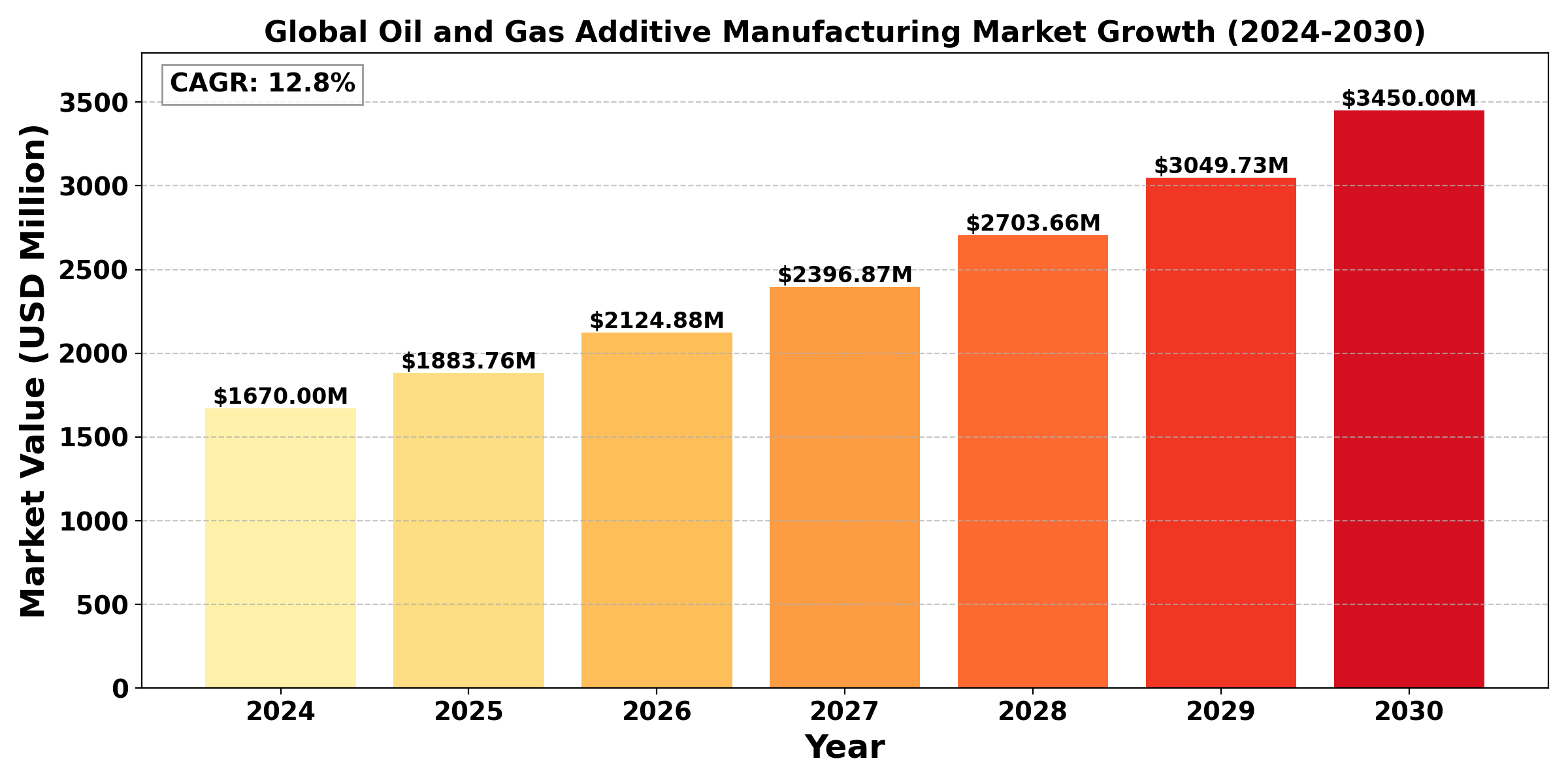TOP CATEGORY: Chemicals & Materials | Life Sciences | Banking & Finance | ICT Media
The "Global Oil and Gas Additive Manufacturing Market" size was valued at US$ 1.67 billion in 2024 and is projected to reach US$ 3.45 billion by 2030, at a CAGR of 12.8% during the forecast period 2024-2030.
The "United States Oil and Gas Additive Manufacturing Market" size was valued at US$ 456.7 million in 2024 and is projected to reach US$ 912.3 million by 2030, at a CAGR of 12.2% during the forecast period 2024-2030.
Oil and Gas Additive Manufacturing refers to the use of 3D printing technologies in the oil and gas industry to design and produce parts, tools, and equipment components. Additive manufacturing (AM) offers significant advantages for this sector, including rapid prototyping, on-demand manufacturing, reduced material waste, and the ability to create complex geometries that are difficult or impossible to achieve with traditional methods.
In oil and gas, AM is commonly applied to produce custom parts for exploration, extraction, and refining equipment, such as drill bits, impellers, and flow control devices. It enables fast, cost-effective repairs and replacements, particularly in remote or offshore locations, reducing downtime and inventory costs. Furthermore, the technology allows for lightweight designs, improved part performance, and the use of specialized materials like corrosion-resistant alloys.
As the industry seeks to enhance operational efficiency and sustainability, additive manufacturing is becoming an essential tool for innovation, helping to extend equipment life, optimize supply chains, and reduce environmental impacts.
Part production reached 850,000 in 2023. Metal printing grows at 14.5% annually. Market saw 48% increase in spare parts printing. Standards adopted in 32 countries. Future investments of US$ 785.4 million planned by 2026. North America leads with 45% market share.

Report Overview
Additive manufacturing (AM) in the oil and gas industry could have an impact unparalleled by any other industrial sectors based on complex engineering.
This report provides a deep insight into the global Oil and Gas Additive Manufacturing market covering all its essential aspects. This ranges from a macro overview of the market to micro details of the market size, competitive landscape, development trend, niche market, key market drivers and challenges, SWOT analysis, value chain analysis, etc.
The analysis helps the reader to shape the competition within the industries and strategies for the competitive environment to enhance the potential profit. Furthermore, it provides a simple framework for evaluating and accessing the position of the business organization. The report structure also focuses on the competitive landscape of the Global Oil and Gas Additive Manufacturing Market, this report introduces in detail the market share, market performance, product situation, operation situation, etc. of the main players, which helps the readers in the industry to identify the main competitors and deeply understand the competition pattern of the market.
In a word, this report is a must-read for industry players, investors, researchers, consultants, business strategists, and all those who have any kind of stake or are planning to foray into the Oil and Gas Additive Manufacturing market in any manner.
Global Oil and Gas Additive Manufacturing Market: Market Segmentation Analysis
The research report includes specific segments by region (country), manufacturers, Type, and Application. Market segmentation creates subsets of a market based on product type, end-user or application, Geographic, and other factors. By understanding the market segments, the decision-maker can leverage this targeting in the product, sales, and marketing strategies. Market segments can power your product development cycles by informing how you create product offerings for different segments.
Key Company